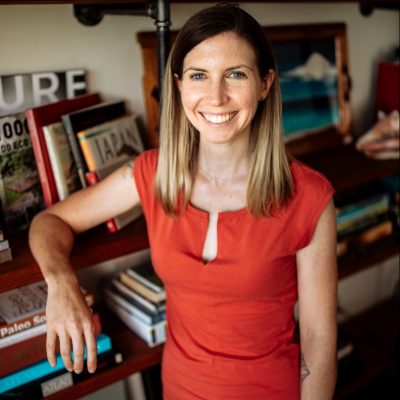13 Fostering Creativity and Critical Thinking Online
Janette Hughes; Laura Morrison; and Diana Petrarca
Introduction
This chapter provides an overview of fostering creativity and critical thinking in secondary school and higher education online teaching and learning. Our advice is grounded on a recent research partnership with the Organisation for Economic Co-operation and Development (OECD) that examines how educators might foster the development of critical thinking and creativity in their students. The overarching objective of this project is to make more visible and tangible what it means to teach, learn and make progress in these skills in education through digital literacies.
Using Design Thinking methodology (Gobble, 2014; Psenka et al., 2017; Doppelt, 2009) and a focus on innovation, educators use production pedagogies (maker approach) to promote inquiry, imagination, creativity, curiosity, and perseverance by learning through mistakes. Most notably, making fosters the development of critical global competencies and transferable skills, such as creative and critical thinking, problem-solving, collaboration, leadership, and innovation. Like the Anticipation-Action-Reflection cycle, design thinking is a fluid and non-linear methodology that tackles complex problems in our local and global communities. Using design thinking, learners exercise their agency to define real-world issues they are passionate about by empathizing and understanding the human needs involved. They brainstorm to generate multiple solutions and prototype and test their solutions. The teacher’s role as a critical facilitator of student learning and nurturer of student metacognition is crucial in this process of constant reflection, collaboration, and sharing, which are built into this iterative cycle and encourage deeper engagement and better solutions to complex social issues.
Creativity
Henriksen et al. (2018) explain that “the definitional challenge of creativity speaks to its ill-structured, multi-faceted nature, which is emergent, contextual, and complex in expression” (p. 2). While this is true, specific characteristics of creativity are shared across the varied definitions in the literature. For example, creativity includes novel or original ideas and effective or impactful products (Zhou & George, 2003; Kaufman & Sternberg, 2010; Sternberg, 2016). Sternberg (2018) explains that “creative work challenges existing ways of seeing and understanding the world” (p. 50). He also explains that creativity can vary between cultures and is “bounded by the constraints of time and place” (p. 50). Boden (2004) classifies creativity into three categories: combinational, exploratory or transformational. Combinational includes combining the familiar in new ways. Exploration includes developing or creating new ideas or products within an existing framework, and transformation consists of generating completely innovative ideas and products outside any conventional framework. The previously impossible is made possible. There are challenges to teaching creativity online. There can be a tendency to prepare lectures because it is relatively easy to create a slide deck; however, providing students with the space and time to do hands-on creating is still possible, whether completed in a synchronous or asynchronous format.
Critical Thinking
As with creativity, the term critical thinking can be challenging to define. Johnson and Hamby (2015) explain that “there is an overabundance of problematic definitions” and that “it is not at all clear that these definitions are equivalent or even compatible” (p. 417). Another reason for the difficulty in defining critical thinking is that critical thinking can look very different across different domains and subject areas (Hansson, 2019). However, Mulnix (2012) believes that while the skills associated with critical thinking may depend on domain knowledge, they are, in fact, not domain-specific. Willingham (2008) explains that “in layperson’s terms, critical thinking consists of seeing both sides of an issue, being open to new evidence that disconfirms your ideas, reasoning dispassionately, demanding that claims be backed by evidence, deducing and inferring conclusions from available facts, solving problems, and so forth” (p. 21). However, he also asserts that critical thinking “is very much dependent on domain knowledge and practice” (p. 21) and therefore, as a stand-alone skill, it can be challenging to teach. Teaching critical thinking online can be done in various ways, including discussion boards or activities requiring students to consider several perspectives on a problem based on different assumptions or explain a theory or concept through both strengths and limitations. The key to teaching critical thinking and creativity is to ensure that students can inquire, imagine, do (make), and reflect on their learning.
General Guidelines
Several rubrics were co-developed by OECD and other participating institutions. Below we share the class-friendly version of the rubric we used to revise our online courses and assignments to focus more explicitly on developing critical thinking and creativity. In developing the rubric, we considered eight design criteria for good lessons:
- Create students’ need/interest to learn.
- Be challenging.
- Develop explicit technical knowledge in one domain or more.
- Include the development of a product.
- Have students co-design part of the product/solution or problem.
- Deal with problems that can be looked at from different perspectives.
- Leave room for the unexpected.
- Include space and time for students to reflect and give/receive feedback.
See Figure 1 for a general class-friendly rubric to assess creativity and creative thinking.
Figure 1.
Class Friendly Rubric
|
CREATIVITY (Coming up with new ideas and solutions) |
CRITICAL THINKING (Questioning Ideas and solutions) |
|
| INQUIRING |
|
|
| IMAGINING |
|
|
| DOING |
|
|
| REFLECTING |
|
|
Activities
Activity 1: Scaffolded Assignments to Foster Critical Thinking & Creativity
Overview
Below is an example of integrating critical thinking and creativity in an online classroom using a scaffolded assignments approach. The practice of online teaching and learning relies heavily on skills related to critical thinking as individuals need to be able to critically navigate, consume and produce digital content, which often requires creativity.
Description
In their first major course assignment, students use the inquiring, imagining, doing, and reflecting model from the rubric above to critique an Online Learning Environment (OLE) of their choice. Examples of OLEs include Khan Academy, NearPod, Duolingo, Coursera c- and x-MOOCs. The purpose of this assignment is for students to understand the common nature of online learning environments in all areas of education – elementary to post-secondary, non-formal to formal – and also to understand what makes a good online learning environment. Students consider the affordances, considerations and promising pedagogical practices associated with their chosen OLEs. More specifically, students are required to use online learning theory to critique their OLE to develop a practical and nuanced understanding of how learning theory connects with good online teaching and learning practices. Students consider, for example, how and why embedding learner-facilitated breakout room discussions in an online course can facilitate engagement and learning (e.g., agency-building practices, socio-constructivist learning theory). Having the students apply learning theory in their OLE critique also prepares students for the next and final major course assignment — creating their own OLE.
The final course assignment (OLE creation) is a natural, scaffolded, progression from the first course assignment (OLE critique). Where the first assignment is based on observation, analysis, and evaluation, the final assignment focuses on understanding, application, and creation. Students apply their knowledge and understanding of general learning theories such as social constructivism for the final assignment (Vygotsky, 1978). They also apply their knowledge and understanding of online learning and content-design frameworks such as the principles of e-learning (Clark & Mayer, 2016) and the Community of Inquiry framework (Garrison et al., 2000). Students are asked to move beyond critiquing other OLEs and create their own OLE – one they could use in their teaching division (i.e., a junior or intermediate classroom) or subject-specific domain (e.g., the English classroom). The purpose of this culminating assignment is for students to consolidate, synthesize, and apply their knowledge to create something new, personally relevant and helpful to their future careers in teaching. Much of the focus of this assignment includes inquiry-based, student-centred, and collaborative learning (otherwise referred to as maker learning or maker pedagogies), so one requirement of the assignment is that the OLEs integrate active (as opposed to passive) learning.
Possible Challenges
- As students are encouraged to select an online learning environment to critique in the first assignment, they may find sourcing difficult. Therefore, selecting potential subject-specific OLEs for the students to choose from is important (e.g., Khan Academy, Duolingo, Coursera). Also, if the students have previously taken any online courses, especially in the near past, these would be good options for their critique.
- Students may feel overwhelmed by the second assignment if they have previously used a website builder. Curating intro tutorials for students or running simple “getting started” workshops may help. In addition, encouraging students to work in pairs or groups to learn and create with the website building tools may be beneficial.
Resources
- Clark, R. C., & Mayer, R. E. (2016). e-Learning and the science of instruction. John Wiley & Sons, Inc.
- Five Educational Learning Theories – A place to start with learning theories
- Weebly (website builder)
- Wix (website builder)
Activity 2: Digital Learning Portfolios
Overview
Reflection plays a critical role in the learning process. Creating a digital learning portfolio serves as a culminating task where learners analyze the contents of their digital learning portfolios, which include responses to weekly prompts and self-assessments based on readings and learning activities. The weekly prompts or guiding questions serve as tools to poke at learners’ prior assumptions about learning and teaching (or it could be adapted to any discipline to address previous assumptions), gently nudging them to frame and reframe puzzling situations. Towards the end of the semester, after engaging with critical thinking prompts to support their analyses, learners reflect on their DLP entries to summarize their key learnings. For example, in initial teacher education programs, students are asked to summarize and share their learning at the end of the semester via creating a personal vision of teaching and learning video (screen-capture). They take the viewer through the various elements of the DLP that shaped the learner’s current vision.
Description
The digital learning portfolio (DLP) is a web-based repository to document learning as students progress through a course. It is important to note that the DLP is a learning portfolio and not a showcase portfolio (Barrette, 2016) where learners document their learning during the course. The overarching purpose of the DLP is to help students:
- Critically reflect on a variety of topics, including their assumptions, learning, content, pedagogy, and cultural contexts.
- Self-assess their learning and development.
- Creatively document personal learning.
- Explore and integrate a variety of technologies in creative and meaningful ways.
- Share ideas and learning with peers and instructors (social and cognitive presence).
- Analyze growth.
DLP Structure
The actual shell of the DLP is created using any website creation platform of choice. We strongly encourage the use of platforms that allow for password protection, given the personal nature of the DLP. The DLP could include a variety of sections to document learning, such as 1) personal statements (in response to bigger-picture questions at various points in the course, 2) guiding questions (these are the weekly prompts to facilitate reflection); 3) self-assessments (conducted periodically throughout the semester), and 4) reflective analysis (opportunities to analyze weekly entries, personal statements, self-assessments within the e-portfolio to examine growth and learning explicitly). The following section describes examples of reflective analysis.
Reflective Analysis
A reflective analysis provides students with opportunities to take stock of their learning by analyzing the contents of their DLP at a particular point in time. For example, midway through a course, learners could reflect on their learning thus far and identify questions or areas that are still puzzling or fuzzy and wish to explore during the rest of the course. Students complete a final reflective analysis of their overall learning at the end of the course. It is crucial to provide a series of questions or prompts to guide the analysis of the DLP. The reflective analysis could be in essay form, whereby specific elements of the DLP are used as in-text citations to provide evidence of the learning, or the reflective analysis could take other multimedia formats. For example, one strategy is to have learners create a video using screen-capture software to explicitly demonstrate learning over the semester. For instance, in initial teacher education, learners are asked to create a final vision of teaching-learning that has emerged from a thorough analysis of the semester’s work in the DLP. This vision approach can be adapted depending on the discipline and course. Learners are provided with a series of questions to help guide the analysis of their responses to weekly reflective prompts, self-assessments, and personal statements. Examples of the questions to help guide the analysis of the DLP include:
- What mental image of effectiveness [discipline-related concept such as leadership, researcher, communicator, child youth worker] will guide your practice or activities in this field?
- How and why has this vision shifted since beginning this course?
- Consider your current mental image of effective [discipline-related concept] within the context of your prior assumptions of [discipline-related concept].
- What might limit the enactment of your vision?
- What research and theories inform your vision? Why?
- What evidence in your DLP explicitly supports the development of your vision?
- How might you creatively approach this culminating task?
- How will you present your vision, and how will it emerge innovatively? Consider the design, techniques, and content.
The final product is a short (4 – 5 minute) video sharing the learner’s vision and how it emerged. Using screen-capture software, the learner guides the viewer through the relevant contents of the DLP to explicitly develop their current vision.
Possible Challenges
- Initially, students may need support and guidance to create a website to create the DLP and the final screen-capture video using the free resources. Some students may lack the confidence and experience to explore various platforms, and some may require directed tutorials.
- The weekly guiding prompts require scaffolding and explicit instruction to help foster reflection.
Resources
- Dr. Barrett’s work on e-portfolios
- Google Sites
- Screencastify – Google Chrome extension (screen-capture software)
- Weebly (website builder)
- Wix (website builder)
General Resources
- On teaching critical thinking: This web page reflects Downes’ perspective of critical thinking and how the formal teaching of critical thinking might be approached.
- Our concept and definition of critical thinking. The Foundation for Critical Thinking: This webpage outlines one perspective on the definition of critical thinking and the dispositions/habits of mind of a critical thinker.
- Human Capability Standards: Reference Model: This document outlines the Human Capability Standards, which include four domains of workforce needs. It aims to bridge the knowledge, skills, dispositions and experiences from the world of education with the needs of the current employment landscape, so students are workforce ready.
- Robert J. Sternberg’s website provides an overview of such subjects as creativity, emotion, intelligence, and leadership. There are resources and references to his work for further reflection.
References
Barrett, H. (2016, March 31). Electronic portfolios. https://www.electronicportfolios.org/
Boden, M. A. (2004). The creative mind: Myths and mechanisms (2nd ed.). Routledge.
Clark, R. C., & Mayer, R. E. (2016). e-Learning and the science of instruction (4th ed.). John Wiley & Sons, Inc.
Doppelt, Y. (2009). Assessing creative thinking in design-based learning. International Journal of Technology and Design Education, 19(1), 55-65. https://doi.org/10.1007/s10798-006-9008-y
Garrison, D. R., Anderson, T., & Archer, W. (2000). Critical inquiry in a text-based environment: Computer conferencing in higher education. The Internet and Higher Education, 2(2-3), 87-105. https://doi.org/10.1016/S1096-7516(00)00016-6
Gobble, M. M. (2014). Design thinking. Research Technology Management 57(3), 59-62. https://doi.org/08956308X5703005
Hansson, S. O. (2019). Critical thinking. Theoria, 85, 3-7. https://doi.org/10.1111/theo.12179
Henriksen, D., Henderson, M., Creely, E., Ceretkova, S., Cernochova, M., Sendova, E., Sointu, E., & Tienken, C. H. (2018). Creativity and technology in education: An international perspective. Technology, Knowledge and Learning, 23, 409-424. https://doi.org/10.1007/s10758-018-9380-1
Johnson, R. H., & Hamby, B. (2015). A meta-level approach to the problem of defining ‘critical thinking.’ Argumentation, 29(4), 417–430. https://doi.org/10.1007/s10503-015-9356-4
Kaufman, J. C., & Sternberg, R. J. (Eds.). (2010). Cambridge handbook of creativity. Cambridge University Press. https://doi.org/10.1017/CBO9780511763205
Mulnix, J. W. (2012). Thinking critically about critical thinking. Educational Philosophy and Theory, 44(5), 464–479. https://doi.org/10.1111/j.1469-5812.2010.00673.x
Psenka, C. E., Kim, K.-Y., Okudan Kremer, G. E., Haapala, K. R., & Jackson, K. L. (2017). Translating constructionist learning to engineering design education. Journal of Integrated Design and Process Science, 21(2), 3–20. https://doi.org/10.3233/jid-2017-0004
Sternberg, R. J. (2018). A triangular theory of creativity. Psychology of Aesthetics, Creativity, and the Arts, 12(1), 50-67. https://doi.org/10.1037/aca0000095
Vygotsky, L. (1978). Mind in society. Harvard University Press.
Willingham, D. T. (2008) Critical thinking: Why is it so hard to teach? Arts Education Policy Review, 109(4), 21–32. https://doi.org/10.3200/AEPR.109.4.21-32




